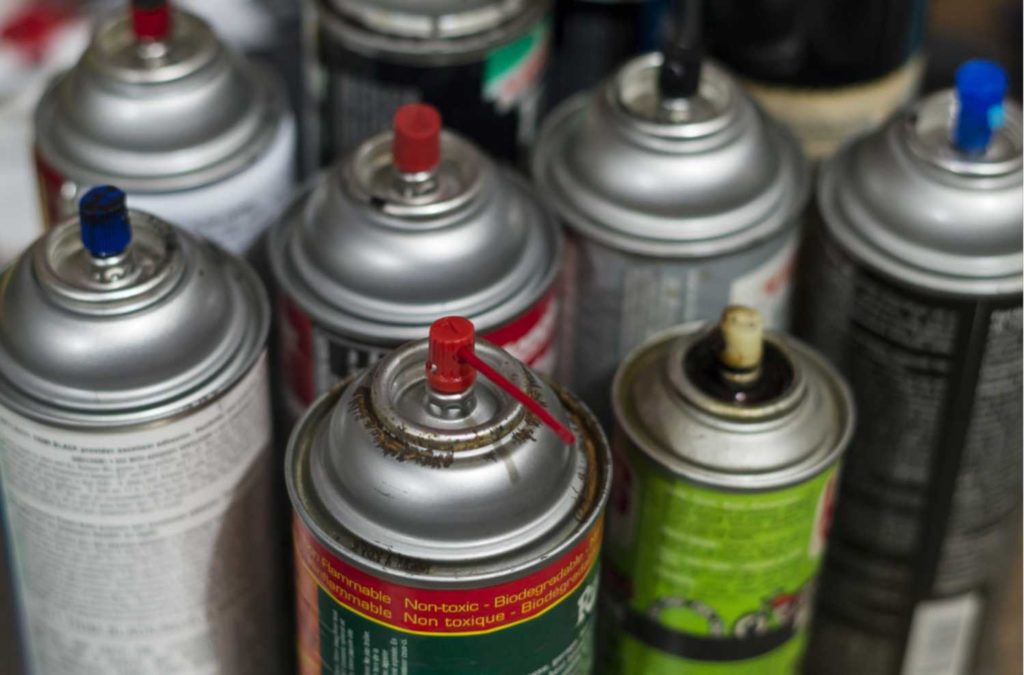Safe Storage Of Aerosols: What You Need to Know

Aerosol cans are usually small and easy to transport around your workplace. This can make them seem like an insignificant hazard. But if you use aerosols in your workplace, it can be important to know what you’re dealing with. Aerosols can present severe dangers if they’re not used or not stored correctly. Australian workplaces also have an obligation to keep their staff and the environment safe. You and your staff deserve to go home safely each day. So, it’s important to consider safe storage of aerosols to ensure compliance. This article explains the dangers of aerosol sprays and the best methods to store them safely.
WHAT ARE AEROSOLS?
Aerosols are a broad category of gases or liquids stored under pressure. Aerosols that are used in a workplace usually come in as a spray or in a can. Pressurised chemicals can be a hazard because their concentration can cause injury if released incorrectly, like through a puncture. Many aerosols are also flammable and poisonous chemicals. Flammable, pressurised chemicals have the potential to explode. For example, spray paints, cleaner fluid, lubricant or lighter fluids, which are commonly found in the workplace.
Related Product: Aerosol Can Storage Cabinets
HOW DO AEROSOL SPRAYS WORK?
Aerosol sprays contain a substance that’s pressurised into a liquid. When released through a nozzle, the liquid disperses as a fine mist.
The can’s pressure is much higher than outside, so the chemical can spray out forcefully and long distances when released. This is a hazard because the force could cause injury to people, and the distance it travels can make it hard to control.
Propellants
Aerosol cans contain two different substances, the liquid chemical and propellant gas. The propellant gas is responsible for maintaining high pressure in the can. The propellant also helps release the liquid with a powerful mist force necessary for use.
Propellant gases can be carbon dioxide, butane or propane, for example. Although, many sprays now use more environmentally friendly chemical propellants. These gases make up a significant amount of the risk that aerosols pose. Propellants can be flammable, poisonous and explosive at high pressure. It can be important to adhere to all safety instructions and use the correct PPE when handling aerosols.
Valve
The small valve at the top of the can allows for the regulated release of the chemical. Pressing the nozzle at different pressures provides for the right amount of liquid to release. If this valve sustains damage, it can become dangerous.
HAZARDS TO WORKERS
Three common hazards are relevant when working with aerosol cans:
- Pressurisation. Punctures, faulty valves, excessive temperatures or corrosion can cause problems with the pressurisation of the can. The most severe risk with pressurisation is the explosion of the can. Can bursts can burn workers or cause metal pieces to fly through the workplace.
- Hazardous chemicals. The usable chemical inside the can may pose risks to health and safety. Aerosol cans can store many substances that are often harmful to inhale or poisonous to the skin. For example, the solvents found in paints and cleaners are toxic to inhale.
- Flammable. If either the propellant or the chemical inside is flammable, they can pose a severe fire risk.
SAFE STORAGE OF AEROSOLS
You can minimise the risks that aerosols pose by learning some storage best practices:
General aerosol safety
As with most hazards, you can reduce the dangers caused by aerosols by determining whether they are actually necessary. If you can eliminate unnecessary aerosol use, you can minimise the risk they pose to your workplace.
Workers who use aerosols can become familiar with the Material Safety Data Sheets (MSDS) for the material used in each aerosol. MSDS can outline the appropriate PPE and ventilation for each chemical used.
Safe storage conditions
- Aerosols need storing in dry areas that don’t reach high temperatures. High temperatures can increase the pressure in aerosol cans and lead to explosions. Be cautious of leaving them near windows, in sunshine or in vehicles that could overheat the can.
- As the gases or liquids inside can be flammable, they should be stored away from any flames. This includes heaters, ovens, pilot lights or staff smoking areas.
- They need storing in a well-ventilated area. In the case of a gas escaping from the can, a ventilated area can diffuse hazardous fumes quickly.
- They should never freeze.
- Aerosols should have nothing placed on them in storage.
Aerosol cabinets can be the perfect way to meet all these storage requirements in one go. Ecospills safety cabinets minimise the risks that aerosols pose to your workplace. They help prevent ignition and keep containers stored in the correct environment. Aerosol can storage cabinets are secure, safe and well-ventilated. Having a cabinet solely for aerosol storage allows for simple storage. Nothing can be placed on top of the cans, and your staff know where to find and return them.
Contact Ecospill to find out more about safe storage of aerosols for your workplace.
